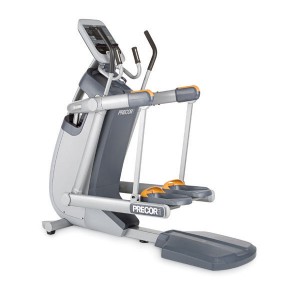In the past few blog posts, you have seen me mention my foot injury many times. That’s because I feel that it was a significant turning point in my life and dealing with that injury taught me a lot about training.
Back in 2008, I was over-training and running in improper running shoes. These two factors were the causes of my foot injury. I was not following proper training techniques and I did not think that running 15km in cheap running shoes would be a problem. So, there I was doing my 15k run, running as fast as I could and all of a sudden, I felt a sharp pain in my arch. I also had Achilles Tendinitis (which is an overuse injury to the tendon that attaches the calf muscle to the heel bone). Believing that it was no problem, I continued the run. I did not listen to my body at the time and thought that the soreness would go away the next day.
Unfortunately for me, it didn’t. A week later, it went away, so I went for another run and it got worse. It got to the point where I would feel a sharp pain in my arch, Achilles Tendon and heel every time I ran. Little did I know that it would be almost four years until I did any racing again. Those years were the most depressing years for me. I was out of shape and felt very sad.
Even though I wasn’t running for quite a while, deep down I knew that one day I would resume running because my love for the sport is so strong. So, about 2 years after my initial injury and about 35 lbs above my desired weight for my height (I was just under 150 lbs), I decided to get back into fitness and doing what I love…yes, I lost the weight and came back stronger and faster than ever before.
So how did I manage to do this?
To begin my recovery process, I started out with using the Elliptical Trainer and AMT. Both of these cardio machines are great for recovery because they are easier on the joints than running. If you are not a swimmer, like me, then these machines are a fantastic option for you. Swimming, however, is also a good way to recover from running injuries while at the same time maintaining your cardiovascular fitness.
In case you’re wondering what an AMT Machine looks like, check out the photo below. The best part about the AMT is that it works your whole body without putting pressure on your lower body joints. You can also adjust the resistance for a more intense workout. It takes me about 45 minutes on this machine to burn just a little over 700 calories. A 700 calorie per day deficit is quite a bit and over time will result in gradual weight loss.
For about 4 months straight (that’s after nearly 3 years of not doing much exercise at all), I worked out for 45 minutes to 1 hour on the Elliptical Trainer or AMT 3-4 times a week and did 1 short run per week. Short run being anywhere between 5-10km. For the next 4 months after that, I replaced one of the cardio machine sessions with an additional run, so I was doing 2 runs a week, in addition to the Elliptical Training and AMT.
I also lifted weights in order to strengthen the muscles and improve muscle balance around all my joints to help avoid future injuries. I started to really notice physiological changes after about 12 weeks since I started exercising consistently.
In addition to weight training and cardio, I was stretching all the major muscle groups to help avoid injury due to muscle tightness. Since the re-start of my training routine, my goal is and always will be to get through it uninjured.
Gradually, my body started adapting to longer distances again. I increased my weekly mileage by no more than 10% each week. I also made sure to take a couple of days off from running if I thought I was feeling pain. However, when I was not running, I was focusing on the other forms of cardio, mentioned earlier in this post. I would say that it took about 6 months for me to be comfortable with the marathon distance after I started running more regularly.
It is also in the midst of my recovery from the injury that I decided to take up personal training. I found that the personal training courses were highly useful in teaching me how to properly perform exercises so that I don’t get re-injured. Another reason I took up personal training is because I want to help other people minimize the risk of injuries while exercising. My goal as a trainer is to help people reach their fitness goals without having to deal with painful setbacks like I had. People have every right to reach their fitness goals safely and effectively and I want to be there for them.
So, in summary, what are some of the keys to avoiding injuries and successfully recovering from them?
First, to avoid injuries, it’s important to choose the right running shoes for your feet even if that means paying a little bit more money.
Second, listening to your body is also critical. If you feel the bad kind of pain, stop what you are doing and do something else.
Third, take the time to learn how to properly perform the exercises (watch your form, stride, posture, etc) and how to progressively overload your body as it adapts.
Fourth, while you are recovering, pay close attention to how your body feels and don’t get discouraged if it takes you a while before you return to your pre-injury fitness level.
Please note: recovery varies from injury to injury. If you get injured, it is best that you see a doctor prior to starting or restarting any exercise program.
